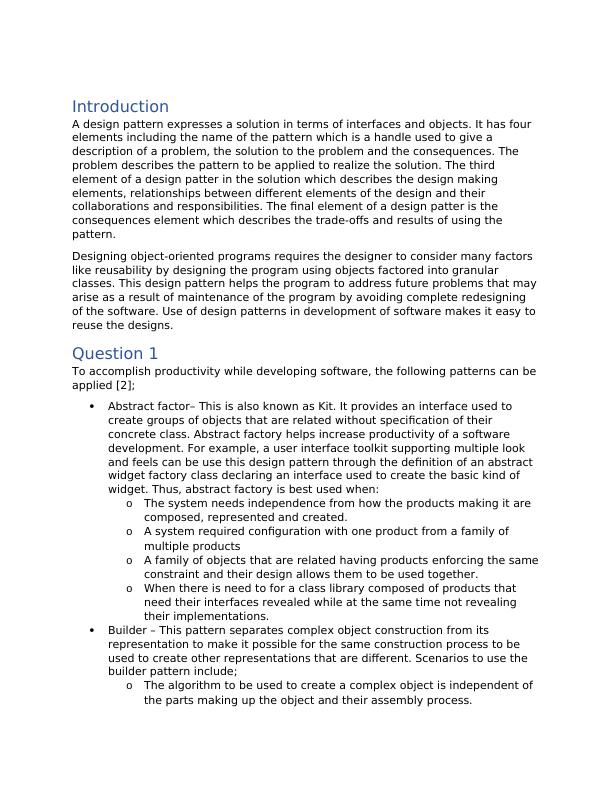Design Pattern | Interfaces and Objects
Added on 2022-08-21
5 Pages1267 Words11 Views
End of preview
Want to access all the pages? Upload your documents or become a member.
Object Oriented Software Development
|7
|1021
|93
Object Oriented Software Development
|10
|2054
|50
Object Oriented Software Development
|7
|1034
|90
Object Oriented Software Development
|11
|2016
|72
Object Oriented Design Patterns in Java
|15
|2645
|493
System Design Analysis Using UML PDF
|5
|950
|81


